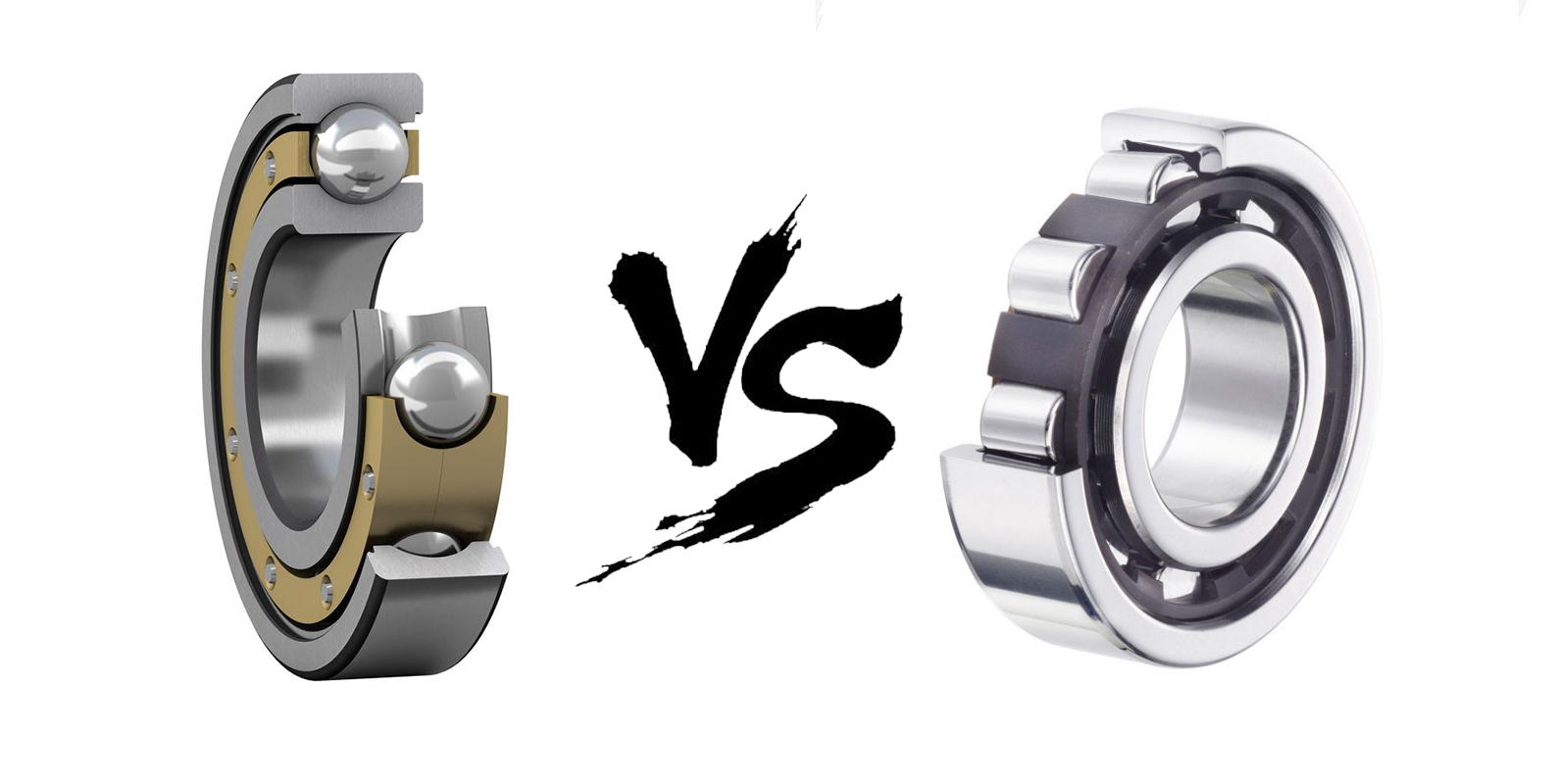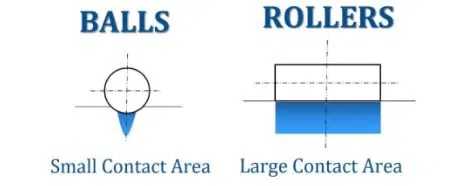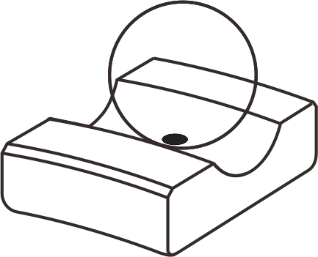Wishlist
The products are limited
The products are limited
Rolling bearings are the most widely used basic parts of various machinery. This article will explore the advantages and disadvantages of ball bearings VS roller bearings.

Rolling bearings are generally composed of an outer ring (housing washer), inner ring ( shaft washer), rolling element, and cage. Still, not all these components are necessary, such as some bearings without the outer ring (housing washer) or without an inner ring ( shaft washer), or cage, but must have a certain number of rolling elements, with a certain number of rolling elements is the core feature of rolling bearings.
There are many ways to classify rolling bearings, based on the type of rolling element is one of them. The two basic types of rolling elements distinguish the two basic types of rolling bearings:
Ball→ Ball Bearing
Roller→ Roller Bearing

Thrust Ball Bearings
Miniature Ball Bearings
Self-Aligning Ball Bearings
linear Ball Bearings
Needle Roller Bearings
The loads on the rolling bearing are transmitted through the rolling elements, but balls and rollers are different in how they make contact with the raceways.
Balls make point contact with the ring raceways. With increasing load acting on the bearing, the contact point becomes an elliptical area. The small contact area provides low rolling friction, which enables ball bearings to accommodate high speeds but also limits their load-carrying capacity.

The ring raceway of ball bearings is circular arc shape, and the shape of the ball is also straightforward to process; for these reasons, ball bearings can achieve high precision; for the most precise grade of the ball, the variation of ball diameter is 0.08 μm max. , Deviation from spherical form is 0.08 μm max., Surface roughness 0.01 μm max. Precision ball bearings can also be easier to achieve or even exceed P2 grade. Average precision ball bearings have low requirements for equipment and personnel, low processing costs, and low prices.

In order to achieve a higher speed of significant size bearing, the adverse effects of the inertia of the rolling element can only be reduced by using ceramic materials or more petite balls to reduce the mass of the rolling element; ball bearings cannot use hollow balls, because it is impractical to manufacture hollow balls with isotropic mechanical properties.
As non-locating bearings, due to the limitation of geometric structure, standard ball bearings cannot be axially moved inside the bearing. They can only be axially moved by the outer ring of the bearing in the bearing housing.
For radial rolling bearings other than self-aligning ball bearings, the allowable misalignment of radial ball bearings is minor (Permissible misalignment 5’~12’). However, the allowable misalignment is more significant than that of cylindrical roller bearings, tapered roller bearings and needle roller bearings. Therefore, the installation and use of ball bearings is relatively more straightforward.
Ball bearings are mainly used in motors, compressors, fans, motorcycles, machine tools, retarders, transmissions, passenger cars, household appliances and so on.
Rollers make line contact with the ring raceways. With increasing load acting on the bearing, there are many kinds of contact surface shapes between the roller and the bearing ring raceway. For example, the contact line between the cylindrical roller and the raceway becomes somewhat rectangular, and the contact line between the tapered roller and the raceway becomes somewhat trapezoid in shape. Because of the larger contact area and the consequently higher friction, a roller bearing can accommodate heavier loads but at lower speeds than a same-sized ball bearing.

Roller bearings have more working faces for rings and rollers, and some types of roller bearings need to modify the Raceway profiles in order to achieve longer service life; these modifications are usually a combination of straight lines and arcs or complex curves, which have high requirements for processing equipment and personnel, and high processing costs and prices. For the most precise grade of roller, the variation of roller diameter is 0.5 μm max. , diameter surface roughness 0.1 μm max.,
In order to achieve a higher speed for large-size bearings, in addition to reducing the adverse effects of rolling element inertia by using ceramic materials to reduce the mass of rolling elements, roller bearings can use hollow rollers. It is easy to manufacture hollow rollers.
Some types of cylindrical roller bearings, such as needle roller bearings and CARB toroidal roller bearings, can achieve axial movement inside the bearing. The roller bearing can be axially moved inside the bearing, which can reduce the width and processing difficulty of the bearing housing. The outer ring of the bearing and the bearing housing can be closely matched, rather than having to leave a gap, which reduces the possibility of the outer ring of the bearing rotating in the housing, avoids the wear of the bearing housing and bearing outer ring, reduces the use cost.

The allowable misalignment of cylindrical roller bearings, tapered roller bearings and needle roller bearings are more miniature than ball bearings, and these roller bearings have a minimal tolerance for the coaxiality error of the bearing holes on the same shaft or the installation error or the bearing tilt caused by the bending of the shaft after loading. Misalignment will increase bearing noise and reduce bearing service life. When it exceeds the index value, these effects become particularly obvious. Therefore, these roller bearings have higher requirements for installation and use, and attention should be paid to ensuring the concentricity of the shaft and the bearing housing.
Roller bearings are mainly used in engineering vehicles, mining machinery, rolling mills, commercial vehicles, trains, heavy machine tools, port machinery, ships, paper machinery and so on.
The comparison is shown in the following table :
| Item | Ball bearings | Roller bearings |
| Load capacity | Good (low rigidity, poor impact resistance) | Excellent (high rigidity, good impact resistance) |
| Friction force | Low friction (low temperature rise, high limiting speed,low starting torque , low energy consumption) | High friction (high temperature rise, low limiting speed,high starting torque , high energy consumption) |
| Vibration and noise | Low(quiet) | High(noisy) |
In short, the performance of ball bearings and roller bearings are different. Ball bearings are usually used for applications such as high precision, light or medium loads, high speed, low noise, no impact, and requiring frequent starting or reversing. In contrast, roller bearings are usually used for applications such as general accuracy, medium or heavy loads, medium and low speed, and impact, and do not require frequent starting or reversing.
It should be based on the load, speed, lubrication and cooling, cost, and working environment conditions, as well as comprehensive consideration of different applications, in order to achieve the best performance and efficiency.
At TFL-Bearings, we provide a variety of bearings to meet your specific needs and help you select the right bearing for your equipment.